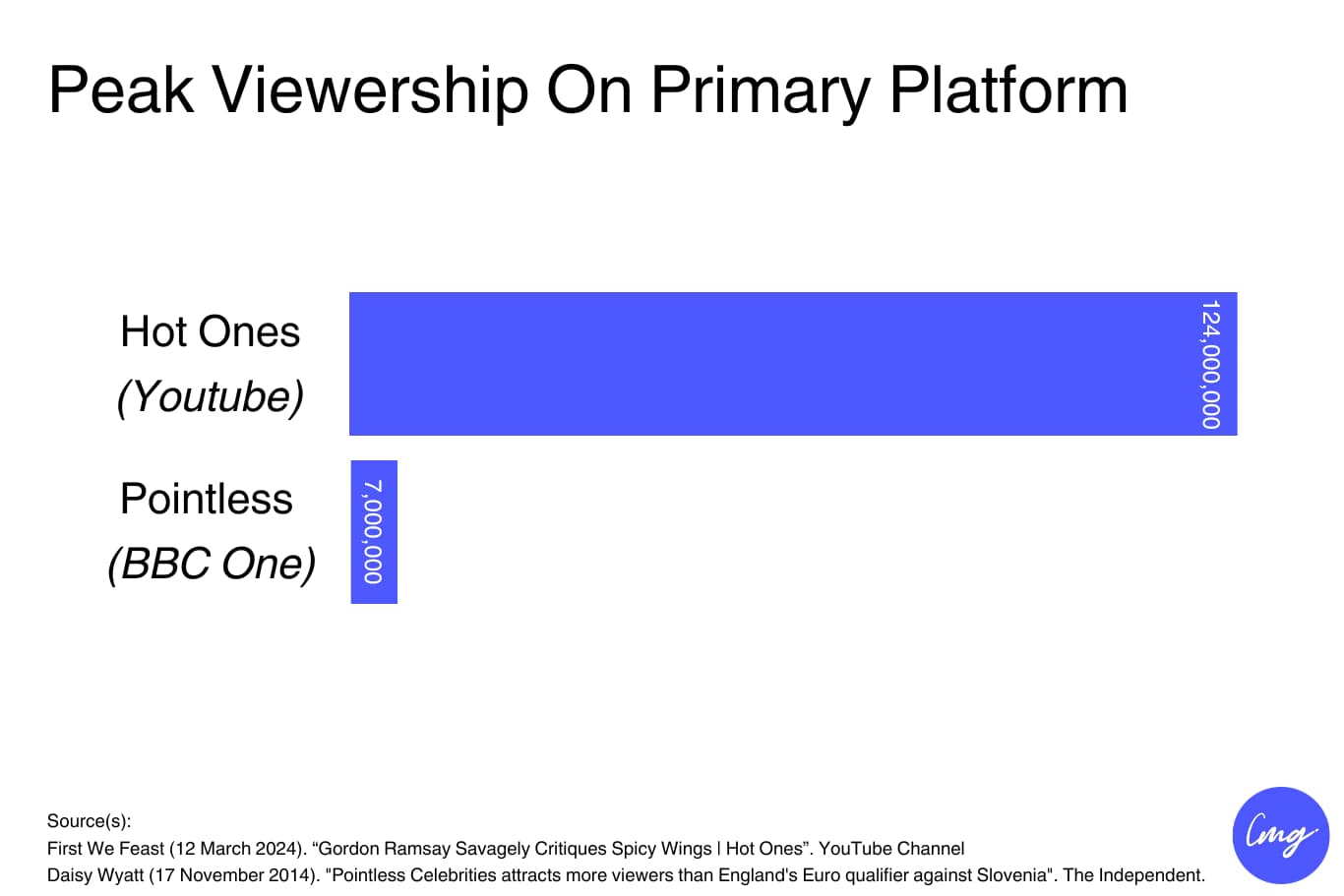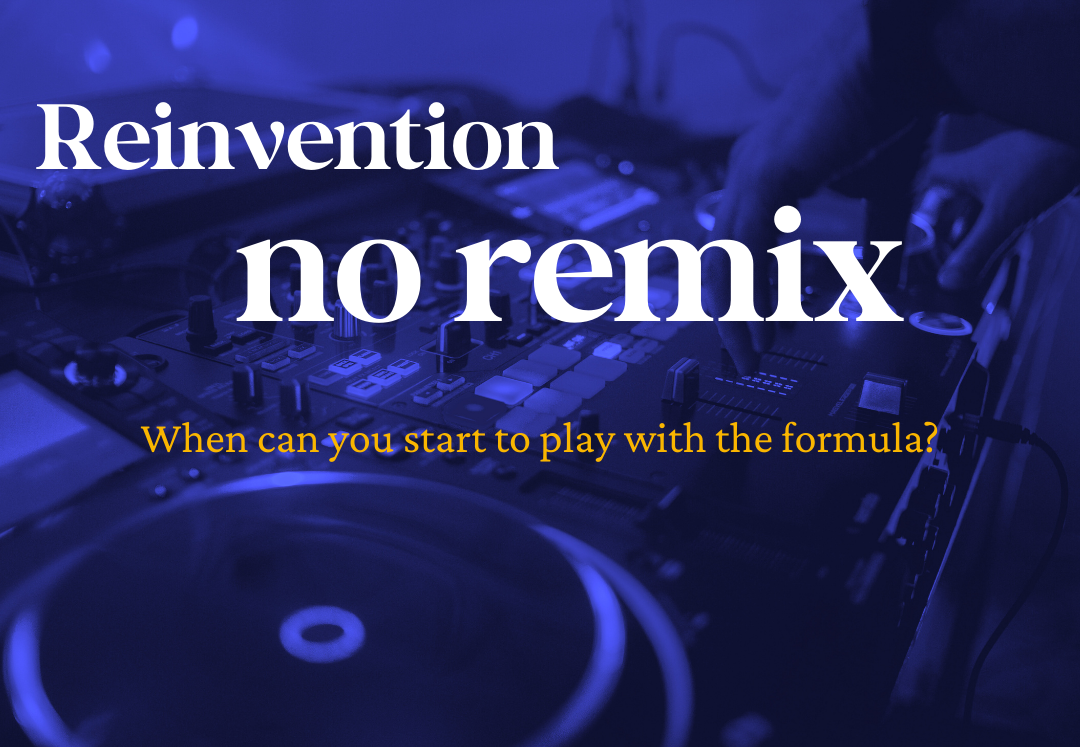Content Marketing Is Getting Old… But It Doesn’t Matter. It’s Immortal.
Written by

Luke Besant
POSTED
12th March 2024
CATEGORY
Insights
There’s a prevailing wisdom in marketing, often paraphrased as, “People don’t engage with ads; they engage with what interests them, and sometimes that happens to be an ad.” This insight is crucial in debunking the common misconception that people inherently disengage from content marketing.
Take, for example, some of the most significant phenomena on YouTube. Shows like ‘Hot Ones’ stand as a testament to the power of content marketing. At first glance, it’s a simple format: celebrities answering questions while eating progressively spicier chicken wings. Yet, this ingenious concept does more than entertain; it subtly integrates product placements, endearing the brand to millions worldwide. This isn’t a fluke but a masterclass in aligning content with audience interest.

But let’s not be fooled into thinking content marketing is a child of the digital age. Long before the internet reshaped our lives, savvy companies were already leveraging content to draw in audiences. Consider the Guinness Book of World Records, initially conceived as a reference to settle pub arguments. Or the Michelin Star system, which began as a guide to encourage more road travel (and thus, tyre purchases). These aren’t just marketing ploys; they are valuable resources that serve a dual purpose: providing genuinely engaging content while subtly promoting the brand.
What binds these examples is not just their success but their origins. Each began within the affinity of interest between the audience and the company.

The Guinness Book was a bar book; the Michelin Guide, a traveller’s companion; ‘Hot Ones,’ an obscure challenge turned mainstream sensation. These endeavours started from a place of authenticity, deeply rooted in the interests and lifestyles of their intended early adopter mavenary audiences and sprawled outward to mainstream success based on their infectious appeal. It’s viral content in the truest sense of the word, with a particularly high “r. Number”, a concept we became all too familiar with in the early 2020s.
This brings us to the crux of the matter: content marketing thrives when it’s crafted with the same love, care, and attention as a non-commercial passion project. The commonality between all successful content marketing examples isn’t just a shared audience interest but a genuine dedication to creating something of value first and foremost. The need for a return on investment comes second to the primary goal of engaging and delighting the audience.
It’s important to acknowledge that all these exemplars—’Hot Ones,’ the Guinness Book of World Records, and the Michelin Star system—are forms of serialised content. This is significant because serialisation allows content to grow, evolve, and gain a life of its own, building a dedicated audience over time and creating a sustained engagement that goes beyond a one-off interaction. This evolving narrative maintains interest and strengthens the bond between the brand and the audience, allowing for a deeper and more meaningful connection.
The misconception that people don’t engage with content marketing stems from a misunderstanding of what effective content marketing truly is. When done right, it’s indistinguishable from the content we seek out for pure enjoyment. The key to its success lies not in overt selling but in creating something that resonates on a deeper level, something that starts from an affinity of interest and grows into something much larger. In this light, we can see that content marketing, far from being a modern invention, is as old as storytelling itself. When we craft our messages with the audience’s interests at heart, prioritising their desires, the return will naturally follow.
Brainstorming Serialised Content Marketing Ideas for Your Brand
In the spirit of innovation and drawing from the illustrious examples of ‘Hot Ones,’ the Guinness Book, and the Michelin Guide, let’s dissect how you can concoct your brand’s own compelling serialised content:
Find Your Quirk: Like a good pub quiz, find the sweet spot between your brand’s essence and your audience’s curiosity. What’s your brand’s equivalent of the Guinness records? That’s your starting line.
Themes Over Products: Think like Michelin, not a tyre salesman. Craft your series around a narrative arc or theme that reflects your brand’s ethos, not just its inventory.
Map the Journey: Serialised content isn’t a sprint; it’s a marathon with your audience. Design content that evolves, guiding your audience through a journey with your brand as the trusted companion.
Embrace the Conversation: Serialisation thrives on feedback. Make your content a two-way street à la ‘Hot Ones,’ where audience reactions and suggestions shape the narrative.
Trial and Error: The first pancake is always a bit dodgy. Launch, learn, and refine. Serial content is not set in stone; it’s clay, ready to be moulded by audience engagement and insights.
Essentially, developing serialised content is an art form where relevance meets creativity. It’s about crafting stories that engage and resonate on a deeper level, much like weaving a narrative that turns viewers into loyal followers.
Let’s Cook!
If the thought of transforming your brand narrative into a captivating, ongoing saga piques your interest, then it’s worth conversing with the Conscious Marketing Group team. Since my joining earlier this month, we have been actively developing our Content Kitchen proposition with a focus on making consumer-centric, serialised content for our clients.
Together, we can chart a course for a content strategy that speaks to your audience and with them, fostering a lasting connection.

